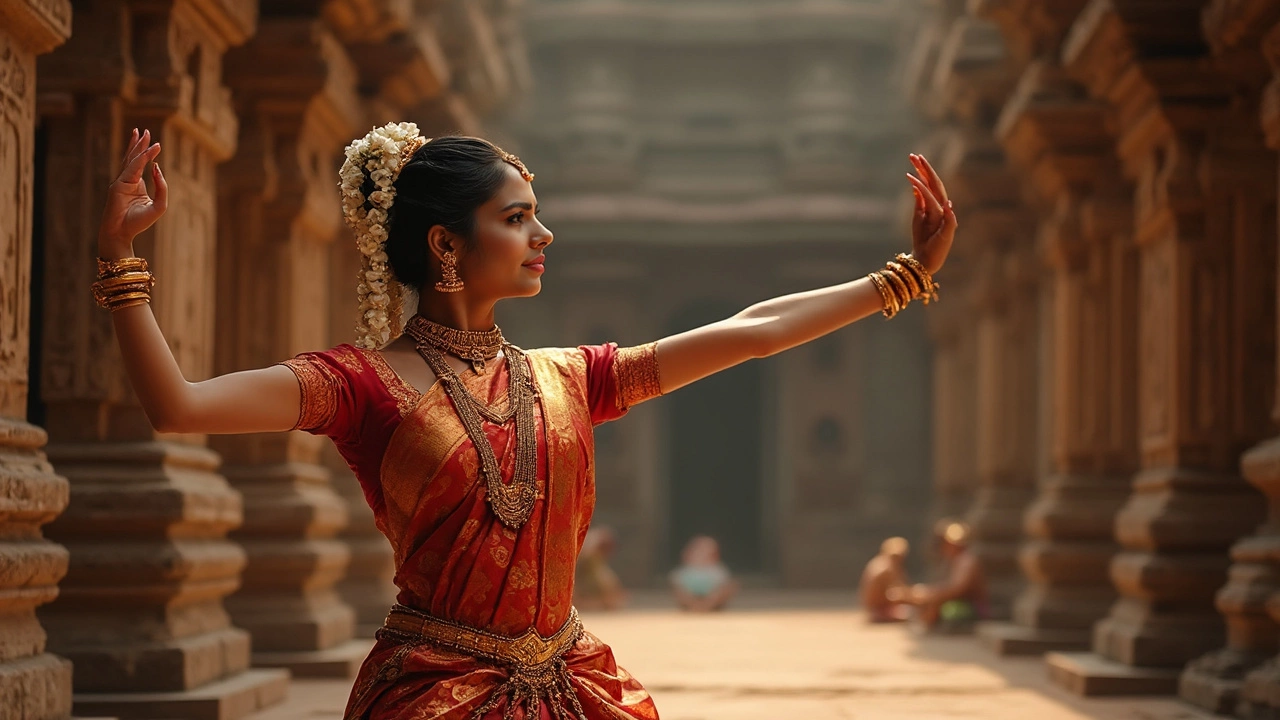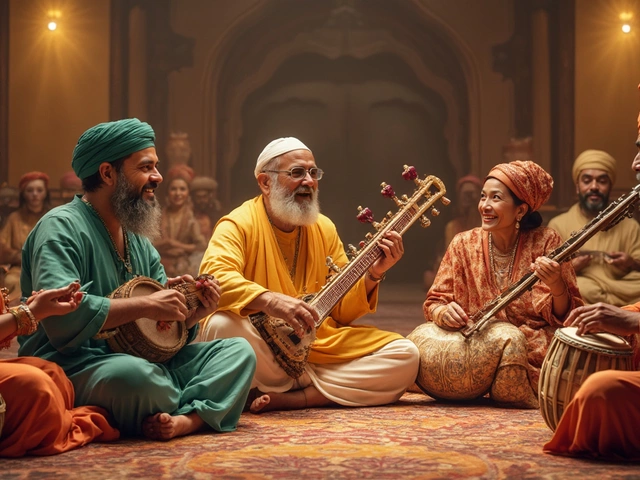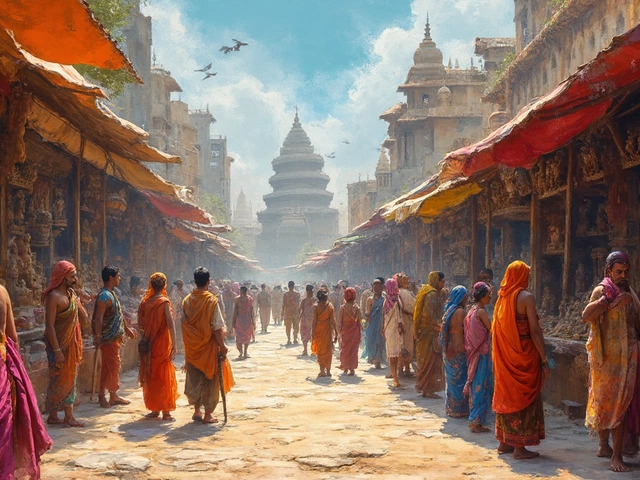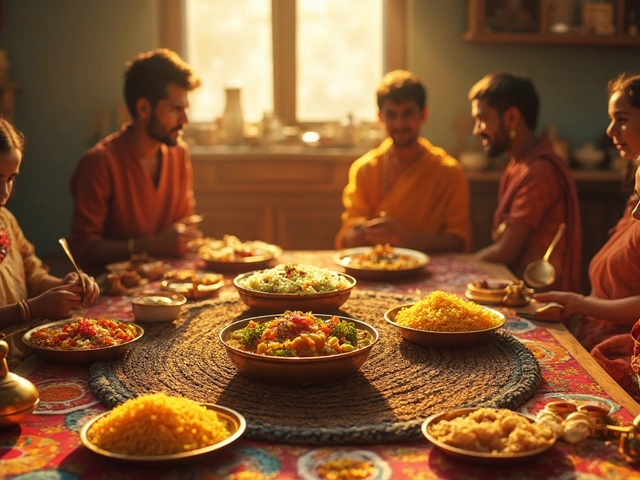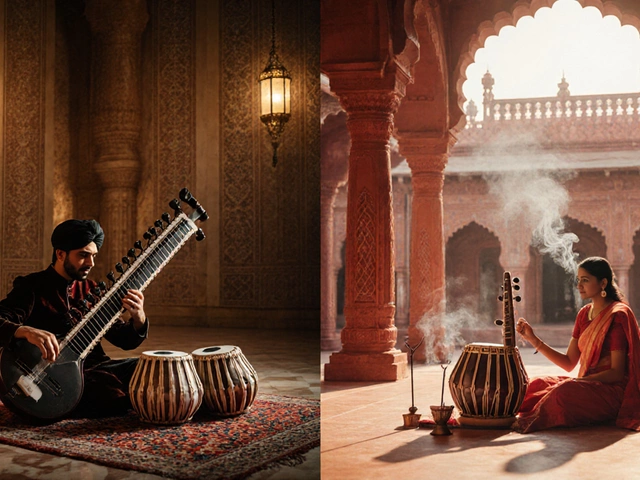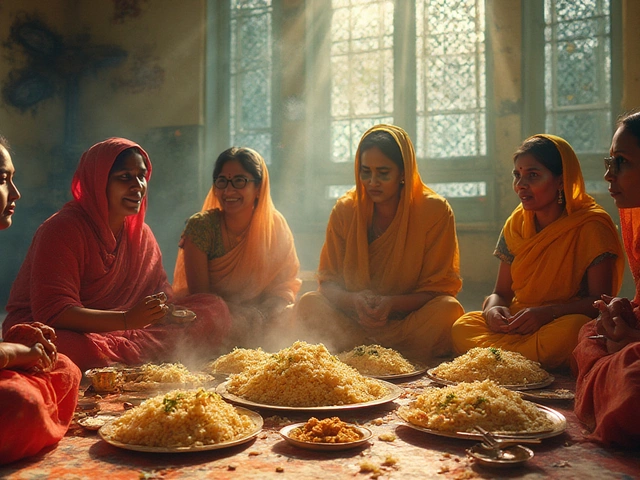When you think of Tamil Nadu, what pops into your mind? Probably a whirlwind of vibrant outfits, spicy food, and foot-tapping music, right? This state's got a personality like no other. Tamil Nadu is where old meets new, and traditions mingle with everyday life without missing a beat.
One thing that stands out is the music. Imagine starting your morning with soothing Carnatic music. It's like yoga for your ears. This classical music style is deep-rooted here, and it’s not just noise; it’s an emotional experience. Then there’s Bharatanatyam, a dance that tells stories as old as time itself with every graceful movement.
- The Dance and Music Scene
- Festivals and Celebrations
- Traditional Attire and Cuisine
- Architectural Marvels
- Language and Literature
The Dance and Music Scene
So, let’s dig into what makes Tamil Nadu’s dance and music something straight out of a cultural dream. If you're wandering the streets during a festival or visiting a music hall, you'll notice that music and dance are basically part of the air here.
Carnatic music is at the heart of Tamil culture. This classical music form isn't just a pastime; it's a spiritual journey. It’s characterized by intricate ragas (melodic frameworks) and talas (rhythmic cycles). Musicians often engage in jugalbandis or musical duets, showcasing their expertise and creativity.
No discussion about Tamil Nadu’s artistic culture is complete without mentioning Bharatanatyam. This dance form is possibly one of the oldest in India, with roots stretching back more than 2,000 years. Bharatanatyam mixes storytelling with physical expression, utilizing mudras (hand gestures), expressions, and footwork to create a narrative that feels alive.
You might stumble upon a sabha—a cultural club—where locals come together to enjoy these dances and music concerts. During the 'Margazhi' season in December and January, the city practically turns into a stage, with performances happening around every corner.
Here’s a fun fact: Did you know that the Tamil dance scene is not just for elite performers? Even school kids often learn Bharatanatyam as part of their curriculum. It’s a big boost to the continuation of this age-old tradition and gets everyone excited about performing or at least watching this beautiful art form.
If you ever visit, check out the annual Chidambaram Natyanjali Festival, where dancers from all over the world participate, creating a global celebration of Tamil Nadu’s enduring cultural heritage.
Festivals and Celebrations
Tamil Nadu practically buzzes with energy when it comes to festivals. Seriously, it's like every month has its own celebration. These aren't just any festivals; they’re deeply rooted in the Tamil culture and traditions, offering a peek into the region's rich heritage.
Pongal is one of the biggest deal holidays here, kind of like Tamil Nadu’s version of Thanksgiving, minus the turkey. It’s a harvest festival, and trust me, food takes center stage. Think about a dish made from freshly harvested rice, sweetened and cooked to perfection, known as sweet Pongal. The festival stretches over four days and each day has its own significance: starting from Bhogi, where people burn old items to make way for the new, to Mattu Pongal, a day dedicated to honoring cattle that help in the fields.
Then there’s the Tamil New Year, or Puthandu, celebrated in April. Families don new clothes, share a feast, and have a blast welcoming the new year. Ever tasted a traditional Tamil feast? It's a burst of flavors that could make even the pickiest eater’s day.
Not to forget Navratri, which in Tamil Nadu is called Golu. It’s an awesome display of art. People arrange dolls on steps and the creative themes they come up with are nothing short of inspirational. Visitors hop around from house to house enjoying the displays, and of course, some tasty snacks.
| Festival | Month |
|---|---|
| Pongal | January |
| Tamil New Year | April |
| Navratri (Golu) | September/October |
These celebrations are more than just fun times; they’re a reflection of the community’s Tamil Nadu traditions and ways of life. Each festival offers a different slice of history and culture, wrapped up in joy and community spirit. It’s no wonder the state draws in people from all corners to join the festivities!
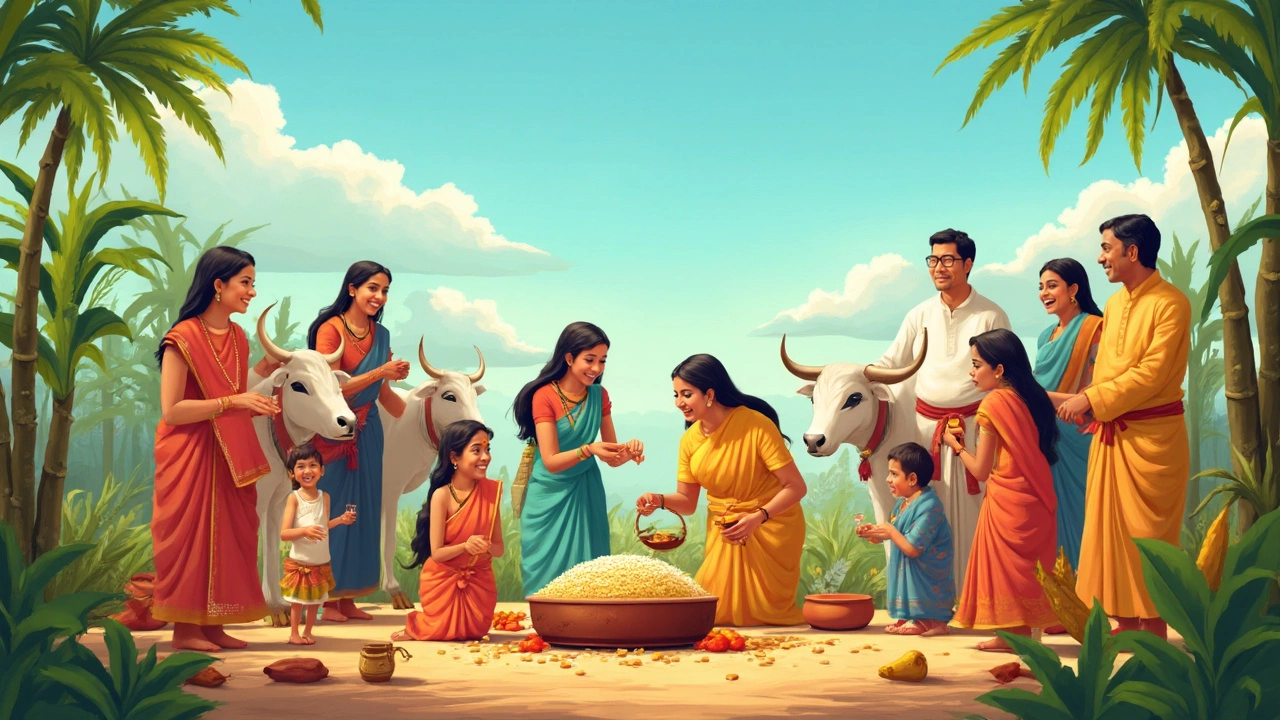
Traditional Attire and Cuisine
Ever seen someone draped in a colorful sari or men rocking a veshti? That's Tamil Nadu for you! The traditional attire here isn't just clothing; it's a statement of identity. Women typically opt for silk saris, especially during festivals and weddings. Kanchipuram saris are a particular favorite, known for their rich colors and intricate designs. They can take months to craft, blending art with expertise.
For men, the veshti or dhoti is a staple. It’s a long piece of cloth wrapped around the waist, often paired with an angavastram, a shawl thrown over one shoulder. These outfits aren't just about looking good; they're a celebration of Tamil culture.
Now, onto the food. Who can resist a spicy platter of Tamil Nadu cuisine? Think dosa, idli, and sambar for breakfast. It's the kind of food that warms the soul. Lunch often features a traditional meal on a banana leaf, laden with rice, rasam, and a variety of spicy curries. Tamil Nadu isn't just about vegetarian delights. Chettinad chicken, loaded with spices, is a feast for those craving some heat.
Here’s a fun fact: The use of banana leaves isn't just traditional; it adds flavor and is eco-friendly. Plus, there are dosas as big as ambition, measuring up to a meter long in some places! How's that for filling?
Tamil Nadu’s attire and food are two sides of the same coin—both rooted in tradition, yet adaptable, allowing old customs to thrive in today's world. It's a colorful ride through tastes and textiles, giving you just a glimpse of the region's cherished heritage.
Architectural Marvels
Tamil Nadu is like a playground for architecture lovers. The temples here aren’t just places of worship. They’re like pages from history carved in stone. Ever heard of the Brihadeeswarar Temple in Thanjavur? It's a UNESCO World Heritage Site and stands like a giant amidst other temples in Tamil Nadu. Built by Raja Raja Chola I over a thousand years ago, this temple is a testament to Chola architecture.
Another gem is the Shore Temple in Mahabalipuram. Imagine standing on the beach, and right there, you spot a temple facing the sea. It’s one of the oldest stone temples in South India and tells tales of the Pallava dynasty.
Let's not skip the majestic Meenakshi Amman Temple in Madurai. It’s a real spectacle with its towering gopurams (gateway towers) adorned in vibrant colors. These structures aren't just massive; they’re intricate, detailing stories from Hindu mythology.
Guess what else is fascinating? The Dravidian architecture style, which is distinct with its pyramid-shaped towers called vimanas. You’ll find these in most major buildings, especially in temples.
There’s a lot to explore if you’re into Indian heritage. Walking through these monuments feels like a journey back in time. The architecture here tells you stories, not just through carvings but through its very structure and design.
And hey, if you’re wondering about stats, consider this: The Great Living Chola Temples, including the Brihadeeswarar Temple, were added to the UNESCO World Heritage Sites list in 1987, showcasing their global importance.
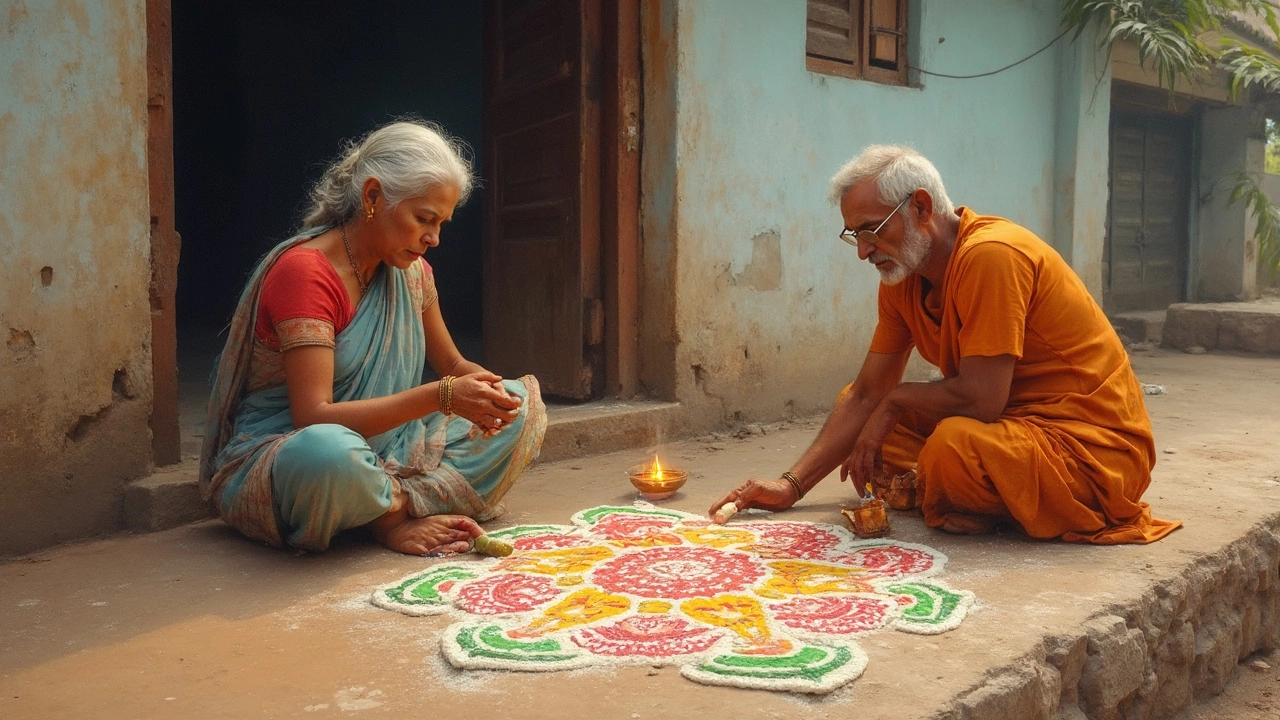
Language and Literature
If there's one thing that holds the pulse of Tamil Nadu's heart, it's the Tamil language. This is more than just a way to communicate; it's a link to a storied past, rich with tales and traditions. Tamil is one of the oldest living languages, having been around for over 2,000 years. It’s no wonder that people here take great pride in it, often referring to it as the 'Soul of Tamil Nadu'.
Now, let's talk literature. You've got Tamil Sangam literature, a treasure chest of poetry and prose that dates back to between 300 BCE and 300 CE. These ancient texts are like peeping into a time machine, revealing everything from love stories to societal norms of the time. Famous works like the 'Thirukkural' by Thiruvalluvar offer timeless wisdom, addressing topics like ethics, wealth, love, and everyday life.
Literature isn't just about old texts, though. The Tamil literary scene today is buzzing with energy. Modern authors push boundaries, crafting novels and stories that reflect the evolving-social landscape. From gripping political narratives to heartfelt human tales, there's something for everyone.
But wait—there's more. The Tamil film industry, Kollywood, also contributes its fair share to literature. Movies here aren't just about glitz and glamour; many are adaptations of classic Tamil literature, bringing stories to the big screen for wider audiences. This world of films ensures that the language and its stories reach even those who might not traditionally dive into books.
Emphasizing Tamil culture through literature keeps traditions alive, igniting younger generations' interest. Schools across Tamil Nadu teach in Tamil, preserving the language and making it an integral part of children's education. So, whether you're flipping through ancient texts or watching the latest blockbuster, there's no escaping the compelling pull of Tamil Nadu's language and literature scene.
